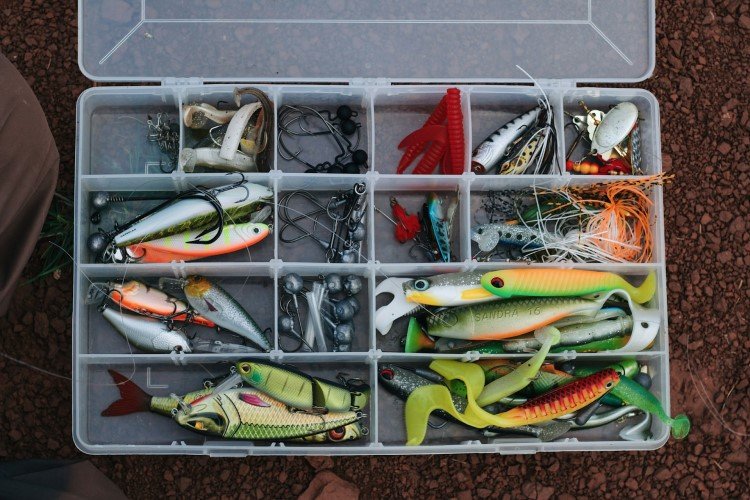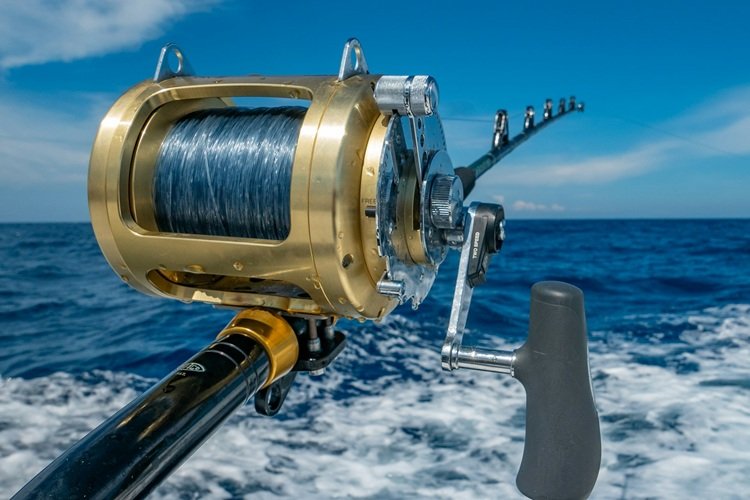
How to Avoid Common Mistakes When Importing Fishing Accessories
Author:White Fox Corporation
Published on:Apr 30 2025
The fishing accessories market is thriving, driven by both recreational and commercial fishing activities. The global fishing equipment market was valued at $14.5 billion in 2022 and is projected to reach $23 billion by 2032, growing at a CAGR of 4.8% .
With this growth comes a complex web of supply chains. Efficient fishing accessories import/export plays a critical role in maintaining product availability and profitability. But while the opportunity is huge, so are the risks.
Common mistakes like sourcing from the wrong fishing jig heads supplier, ignoring compliance, or underestimating logistics can seriously damage your business.
In this blog, we’ll break down the key pitfalls in the fishing accessories trade and show you how to avoid them.
Understanding the Fishing Accessories Import/Export Market
Why Fishing Accessories are in High Demand
The demand for fishing accessories is propelled by both recreational and commercial fishing sectors.
-
Recreational Fishing: With the rise of outdoor leisure activities, more individuals are engaging in fishing as a hobby, increasing the demand for quality gear.
-
Commercial Fishing: As global populations grow, the need for seafood rises, necessitating efficient and durable fishing equipment for commercial operations.
Additionally, the growth of e-commerce platforms has made it easier for consumers to access a wide range of fishing products, further boosting the market.
Key Categories of Fishing Accessories
Understanding the various categories of fishing accessories is essential for importers:
-
Rods and Reels: Fundamental tools for any angler, requiring precision engineering.
-
Lines and Hooks: Critical for successful catches; quality affects durability and performance.
-
Lures and Baits: Designed to attract specific fish species; innovation in design can offer competitive advantages
-
Jig Heads: Weighted hooks that are vital for certain fishing techniques; selecting the right fishing jig heads supplier ensures product reliability.
The fishing lures market alone was valued at USD 3.35 billion in 2024 and is projected to reach USD 5.36 billion by 2033, exhibiting a CAGR of 5.3% .
Common Mistakes to Avoid When Importing Fishing Accessories
1. Inadequate Research on Suppliers
Failing to thoroughly vet suppliers can lead to partnerships with unreliable or unverified entities.
Risks: Substandard products, delayed shipments, and potential legal issues.
Solution: Conduct comprehensive background checks, request references, and assess the supplier's track record in the fishing accessories import/export industry.
Particularly for specialized items like jig heads, partnering with a reputable fishing jig heads supplier is critical to ensure product quality and compliance.
2. Ignoring Product Quality Standards
Overlooking quality standards can result in importing products that are unsafe or non-compliant with local regulations.
Importance: Ensures customer safety, satisfaction, and adherence to legal requirements.
Best Practices:
-
Request product samples for evaluation.
-
Verify certifications and compliance with industry standards.
-
Engage third-party inspection services for unbiased assessments.
3. Overlooking Compliance and Regulations
Each country has specific regulations governing the import of fishing accessories.
Consequences: Non-compliance can lead to fines, confiscation of goods, and reputational harm.
Recommendations:
-
Stay informed about customs documentation requirements.
-
Understand safety certifications and import duties.
-
Be aware of country-specific restrictions on fishing gear.
4. Poor Communication with Suppliers
Miscommunication can result in misunderstandings, incorrect orders, and strained relationships.
Challenges: Language barriers and cultural differences.
Strategies:
-
Use clear, concise language in all communications.
-
Provide detailed product specifications and expectations.
-
Establish regular check-ins to ensure alignment.
5. Not Factoring in Hidden Costs
Unexpected expenses can erode profit margins and affect pricing strategies.
Common Hidden Costs:
-
Shipping and freight charges.
-
Customs duties and taxes.
-
Storage and warehousing fees.
-
Insurance premiums.
Mitigation:
-
Conduct a thorough cost analysis before finalizing deals.
-
Include contingency budgets for unforeseen expenses.
A 10% shipping cost error could wipe out your margin in the fishing accessories import/export business.
6. Lack of Quality Control Measures
Without proper quality control, defective products can reach customers, damaging brand reputation.
Importance: Ensures consistency, reliability, and customer satisfaction.
Implementation:
-
Establish quality benchmarks and inspection protocols.
-
Engage third-party auditors for unbiased evaluations.
-
Regularly review and update quality control processes.
How to Source the Right Fishing Jig Heads Supplier
What Makes a Supplier Reliable
You can’t afford to compromise when choosing a fishing jig heads supplier. A reputable supplier should check these boxes:
-
Holds ISO certifications or similar quality credentials.
-
Experience in the fishing accessories import/export business.
-
Transparent in their communication and willing to provide samples.
-
Offers consistent batch testing and traceability.
A good supplier will also work with you, not just for you helping refine designs, improve efficiency, and grow together.
Questions to Ask Your Fishing Jig Heads Supplier
Before placing an order, ask the right questions to avoid surprises later.
-
What is your MOQ (Minimum Order Quantity)?
-
What’s your lead time for production and shipping?
-
Do you offer any quality assurance guarantees?
-
Can you customize jig heads (color, weight, hook type)?
-
What logistics support do you offer for international buyers?
Best Practices for Smooth Fishing Accessories Import/Export
Build Long-Term Supplier Relationships
Repeat orders build trust and unlock better deals. With the right supplier, you can scale confidently.
Benefits of strong partnerships:
-
Preferential pricing.
-
Early access to new products.
-
Faster conflict resolution.
-
Consistent product quality
Use Technology to Track and Manage Shipments
Don’t rely on emails alone. Tech tools can save time and provide full visibility.
Recommended tools:
-
Inventory management systems like TradeGecko or NetSuite.
-
Shipment tracking platforms like Flexport or Freightos.
-
Communication apps like Slack or WeChat for real-time updates.
Leverage Trade Experts or Sourcing Companies
Working with global sourcing companies can reduce risks and streamline your workflow.
Why consider trade experts:
-
Handle complex import/export documentation.
-
Verify factory certifications and audit reports.
-
Offer custom product solutions for niche markets.
Hiring an import/export consultant or partnering with a sourcing agency can be invaluable if you're new to the fishing accessories game.
Conclusion
Importing fishing accessories, especially niche products like jig heads can be a lucrative business, but only if done right. Avoiding common pitfalls like ignoring product quality, failing to vet suppliers, or underestimating costs can make or break your venture.
Choosing the right fishing jig heads supplier is the cornerstone of a successful fishing accessories import/export strategy. With thorough research, strong supplier relationships, and attention to compliance, you can sail smoothly in the global fishing gear market.
Ready to cast your line in the world of global trade?
Just remember like fishing, importing is all about patience, precision, and picking the right bait. And when you're ready to streamline your import operations, let Whitefox Corporation guide your journey to success.


